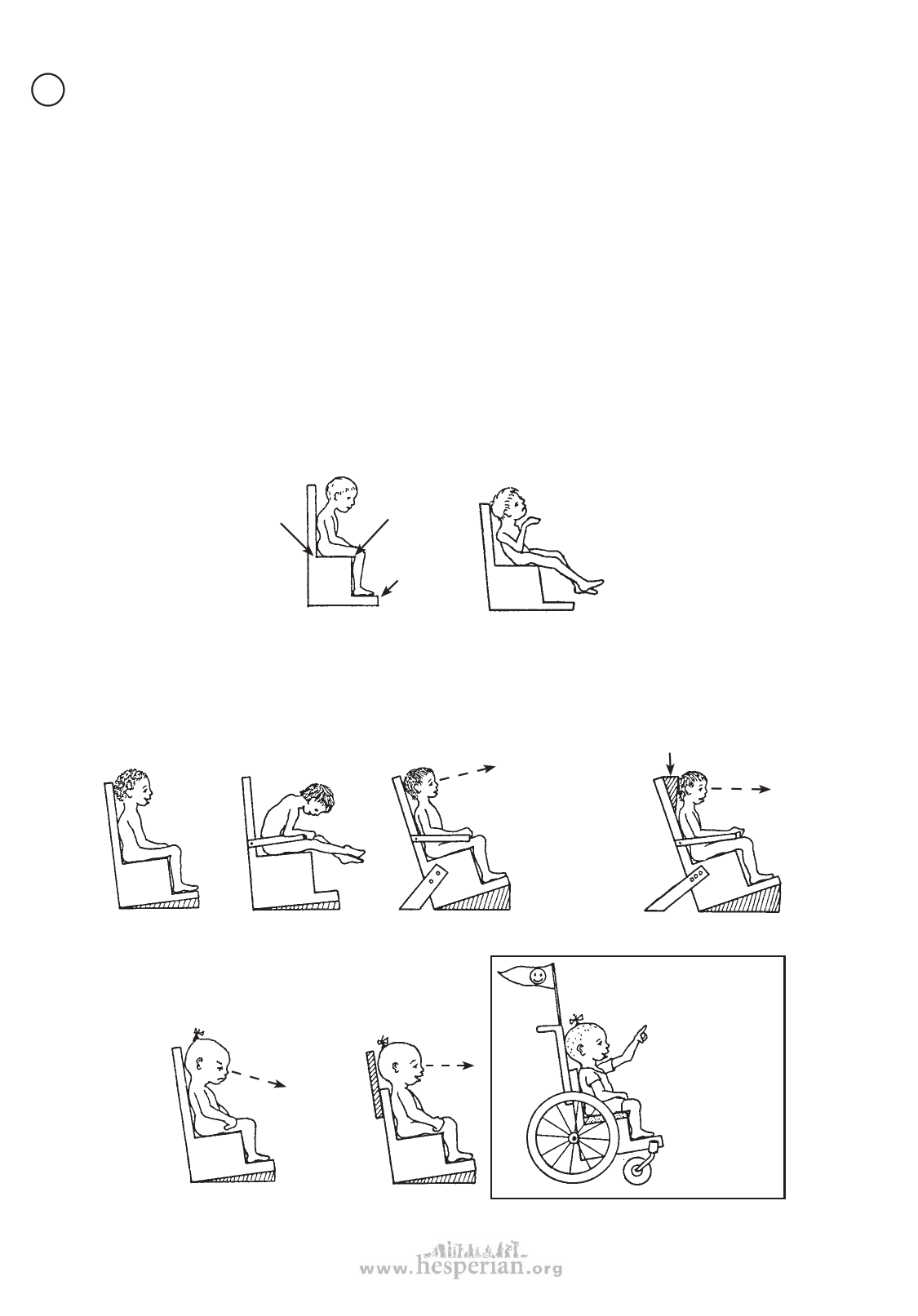
608 chapter 65
CP Seating adaptations for specific children
The various adaptations discussed here are designed to meet specific needs
of individual children, especially children with cerebral palsy. Remember that each
child’s needs are different, and adaptations that are not carefully fitted to the needs
of the child may do more harm than good.
1. Carefully consider the child’s specific needs before including any adaptation or
special seating.
2. After making an adaptation, evaluate how the child uses it.
3. Check often to see if it continues to help the child. An adaptation for a growing
child may help her progress at one stage of development but hold her back a few
weeks or months later.
General position
We have talked about this a lot, but it is worth repeating:
Most children who
require special
seating sit best
with their hips,
knees, and ankles
at right angles.
right
angle
90°
USUALLY
RIGHT
right
angle 90°
right
angle 90°
USUALLY
WRONG
A chair shaped like
this may cause a child
with spasticity to stiffen
and straighten, or cause a
severely paralyzed child
to slip forward and slump.
ANGLE OF BODY AND HEAD
A slight backward
tilt helps most
children sit in
a better, more
relaxed position.
If the
child still
falls or
stiffens
forward,
it may help
to tip the
chair back
even more.
A head pad may help
position him to look
forward, and may decrease
some spasticity. It can
also reduce spasticity in
the eye muscles.
However,
this may
cause his
head to lean
back so his
eyes look
upward.
The heads of babies
and small children
may be so big that
the headrest
tilts them
forward so
their eyes
look down.
Putting the headrest
behind the level of
the backboard lets
the child
hold her
head in
a better
position.
REMEMBER:
All the
seating
ideas
shown on
these pages
apply to
wheelchairs,
and also to
special seats
without wheels.
Disabled village Children